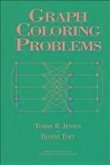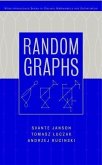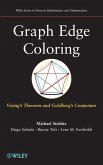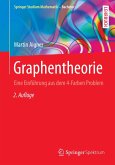A lively invitation to the flavor, elegance, and power of graph theory This mathematically rigorous introduction is tempered and enlivened by numerous illustrations, revealing examples, seductive applications, and historical references. An award-winning teacher, Russ Merris has crafted a book designed to attract and engage through its spirited exposition, a rich assortment of well-chosen exercises, and a selection of topics that emphasizes the kinds of things that can be manipulated, counted, and pictured. Intended neither to be a comprehensive overview nor an encyclopedic reference, this focused treatment goes deeply enough into a sufficiently wide variety of topics to illustrate the flavor, elegance, and power of graph theory. Another unique feature of the book is its user-friendly modular format. Following a basic foundation in Chapters 1-3, the remainder of the book is organized into four strands that can be explored independently of each other. These strands center, respectively, around matching theory; planar graphs and hamiltonian cycles; topics involving chordal graphs and oriented graphs that naturally emerge from recent developments in the theory of graphic sequences; and an edge coloring strand that embraces both Ramsey theory and a self-contained introduction to Polya's enumeration of nonisomorphic graphs. In the edge coloring strand, the reader is presumed to be familiar with the disjoint cycle factorization of a permutation. Otherwise, all prerequisites for the book can be found in a standard sophomore course in linear algebra. The independence of strands also makes Graph Theory an excellent resource for mathematicians who require access to specific topics without wanting to read an entire book on the subject.
Dieser Download kann aus rechtlichen Gründen nur mit Rechnungsadresse in A, B, BG, CY, CZ, D, DK, EW, E, FIN, F, GR, HR, H, IRL, I, LT, L, LR, M, NL, PL, P, R, S, SLO, SK ausgeliefert werden.
Reviewed jointly with "A Beginner's Guide to Graph Theory" by W.D. Wallis published by Birkhauser:
"...both...are...quite similar.... Merris writes in a lively tone...all...have adequate sets of exercises. Those in Graph Theory are somewhat more generous, and perhaps more challenging...both are appropriate for upper-division undergraduates." (Choice, May 2001, Vol. 38 No. 9)
"Compared to Graphs and Applications by Aldous and Wilson (Springer-Verlag 2000) and A Beginner's Guide to Graph Theory by Wallis (Birkhauser 2000): '...M [Merris] has a...sophisticated chapter on graphic sequences...some very nice material...which sets it apart from the other two books...all three books are well written.... I am especially impressed with the exercises in M. Not only are there more in M than in the other two books...but there is an excellent range of levels of the problems...'" (SIAM Review, Vol. 43, No. 3)
"...a mathematically rigorous introduction and designed as a versatile instruction tool..." (Quarterly of Applied Mathematics, Vol. LIX, No. 2, June 2001)
"The author's intent to write a lean and lively invitation to graph theory designed to attract and engage students, is well met..." (Zentralblatt MATH, Vol. 963, 2001/13)
"...both...are...quite similar.... Merris writes in a lively tone...all...have adequate sets of exercises. Those in Graph Theory are somewhat more generous, and perhaps more challenging...both are appropriate for upper-division undergraduates." (Choice, May 2001, Vol. 38 No. 9)
"Compared to Graphs and Applications by Aldous and Wilson (Springer-Verlag 2000) and A Beginner's Guide to Graph Theory by Wallis (Birkhauser 2000): '...M [Merris] has a...sophisticated chapter on graphic sequences...some very nice material...which sets it apart from the other two books...all three books are well written.... I am especially impressed with the exercises in M. Not only are there more in M than in the other two books...but there is an excellent range of levels of the problems...'" (SIAM Review, Vol. 43, No. 3)
"...a mathematically rigorous introduction and designed as a versatile instruction tool..." (Quarterly of Applied Mathematics, Vol. LIX, No. 2, June 2001)
"The author's intent to write a lean and lively invitation to graph theory designed to attract and engage students, is well met..." (Zentralblatt MATH, Vol. 963, 2001/13)









